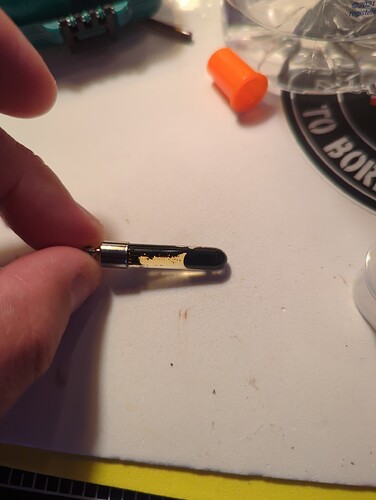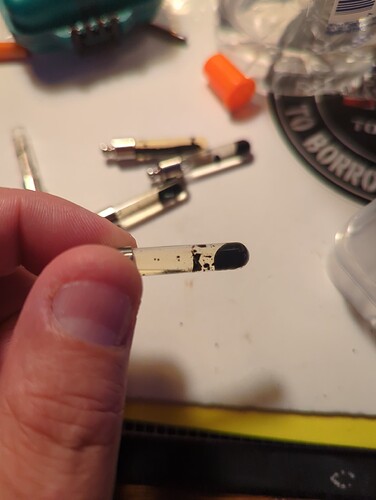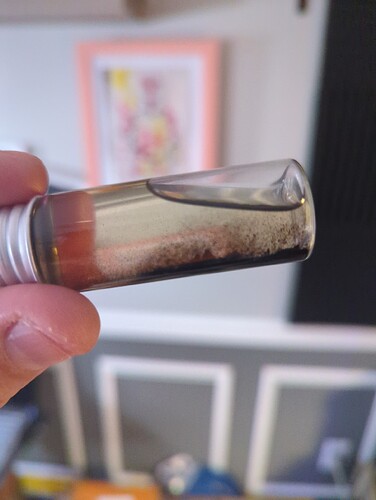I’m a fidgeter by nature. I’m always playing around with something while working. Since I had been planning my xg3 for a least a month I knew I had an opportunity to create something I can play with it while it healed and not worry about messing up the healing process.
I immediately started researching ferrofluid.
I was always interested in it but this gave me an excuse to really get into it.
I bought a couple different brands from the usual suspects and started looking at vessels for my new toy and then started looking at different suspension liquids.
This turned into a big process as this stuff really is particular.
I found a set of vials I really liked. Some YouTube videos then mentioned it works great in a 50/50 mixture of IPA and water. So that’s what I went with. Initially yeah it worked great but I noticed the solution turned rather dingy yellow and I had some bad staining on the vials.
So next i read up more and switching to 91% IPA, and distilled water helped on both the staining and the color.
It did but somehow it destroyed the properties of the Ferrofluid that I l Ioved
So I did more research and turns out a super saturated salt water mixture, and a vessel cleaning process is what gives clear liquid with maintaining the properties that I wanted. The downside is the vessels I’m using are tiny. Like they hold 50 microdoses of liquid.
The process essentially is. Put oxyclean and distilled water in the vessel for 2 days until the oxyclean dissolves. Clean vessel, and put a supersaturated nacl mixture in the vessel. Allow vessel to sit for 2 days. Boil your ferrofluid and place immediately into salt water vessel.
The results are great and exactly what I wanted. The process though is painful.
I’m probably going to make a few more of these and throw them on my tindie but I love the way it turned out


